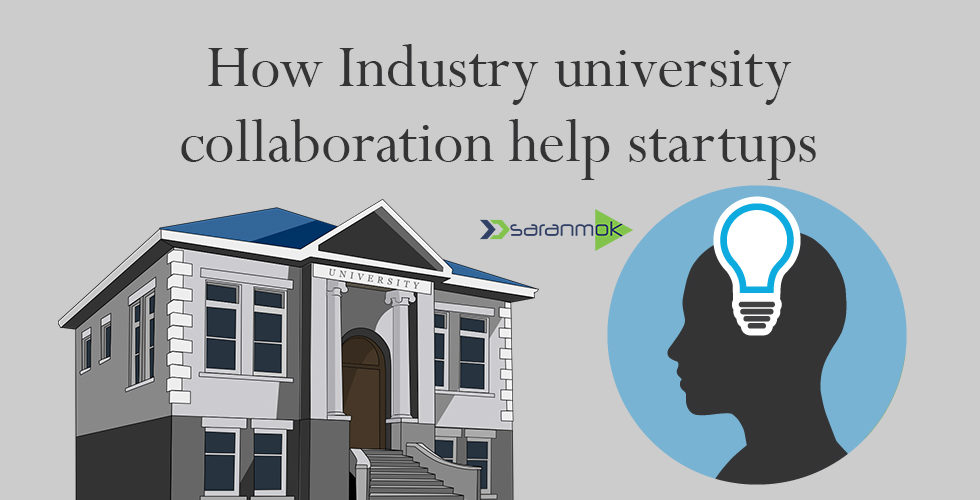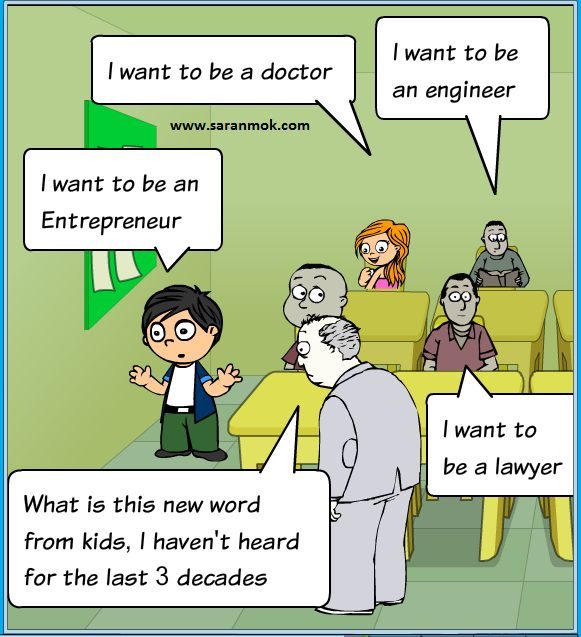
How does industry-university collaboration work? The service industry is getting cheaper day by day as the majority of the people are interested in offering a service rather than innovation. Why? There are two reasons.
- Most of the times service can be offered with an individual’s skill set for a lower price.
- Providing service is much easier than developing a product.
Every nation has to invest a lot on research as we have a pool of human resource talent in many areas. What is a service? If you observe it, product need a service, if there is no product no service required. Dear reader, let me explain in detail.
Let’s imagine a situation no one is interested in investing in innovation and research, then to whom do you provide the service.
- An IT service is being given to enhance a product, maintain it or build it from scratch.
- If there is no car manufacturer, why do we need a car servicing center?
- How many service providers you are getting benefited to construct your house? If you don’t build a house?
Why does industry afraid to invest in innovation?

Most of the companies are afraid to invest in innovation as it is feeding a white elephant. Though companies know the gap and market requirement well, they don’t like to get into innovation because of two reasons 1. No guarantee about returns 2. Deviating core business model. Associating with universities may fix this problem. Apparently, it is not a new concept that I am introducing. However, I would suggest encouraging universities to associate with small and medium size companies either.
Find out few energetic guys who have entrepreneurship mindset from existing employees and set up entrepreneurship cells within companies, associated with universities and pick up research students. This association minimizes a lot of cost for companies on human resource and infrastructure.
Advantages to industry:
- Well, operational existing labs save money to companies.
- Don’t need to spend on working space.
- Researchers can help current research trends that would be useful for the design and development of innovative processes.
- Bringing researcher mindset into industry.
- Industry-university collaboration would increase the reputation of a company.
Advantages to University:
Which is first, chicken or egg?
- Inventing a new product and introduce to market?
- Develop a product which based on market need?
Both may work but the second option has more chances to succeed. The collaboration helps universities to create the LIVE environment.
- Faculty will have industry exposure.
- Researchers will have a ready platform to get into companies.
- Universities can adopt industry best practices and well-defined processes.
- Researchers can understand market behavior.
- Researchers can understand technology gaps.
Most of the innovations happened from universities. Apparently, Universities can play a vital role in startup ecosystem as well. Few of the premier universities already have good startup ecosystem. However, I wish every University should create the ecosystem so every student can have the privilege to industry before completion of their academics. I have been hearing from the majority of the people that our education system has to be changed. What has to be changed? The simple answer is: let every student know what society, industry and market need is? Eventually, they can survive.
Other collaborations to strength the ecosystem:
Alumni can collaborate with universities to implement their ideas and utilize University resources. Serial entrepreneurs, investors, and mentors have to associate and share their valuable experience with Universities to strengthen Industry-university collaboration.
Sooner or later service industry is going to weaken, and its contribution towards economy and creation of jobs will go down. What is going to replace? I believe startup ecosystem with university collaboration can create jobs.
Revenue sharing between industry & Academy:

Product: Developing products by collaborating with companies.
Contribution from the University: Human Resource and Infrastructure.
Contribution from Company: Leadership, idea tuning, business strategy, Architecture, Product designing, and promotion.
Revenue: Based on the contribution product revenue will be shared.
Research: Innovation drives technology.
Contribution from the University: Human resource (researchers/scholars) and Infrastructure.
Grant from Company: Leadership, idea tuning, business strategy, Architecture, and Product designing and promotion.
Revenue: Based on the contribution product revenue will be shared.
Consulting: Professors, industry experts, and scholars can form a team for consulting services.
Revenue: Based on the contribution product revenue will be shared.
Industry-university collaboration results in great based on the way of execution.
Also Read: What makes startup ecosystem thrive

He is the Author, Product Specialist, Business Consultant, Entrepreneur, Public Speaker, Thought provoking writer, and Joke writer. Follow him on Twitter



Hey, good article. This is exactly the thought behind Nimble Bee. The Nimble Bee competition is an online collaborative event, connecting the innovation challenges of global businesses with the fresh ideas from students from universities around the world. Check out their site for more info: http://www.nimblebee.university
Cheers,
Peter
Like!! I blog quite often and I genuinely thank you for your information. The article has truly peaked my interest.